As one of the oldest civilizations on earth, China has a long history with horses. However, many people are not familiar with the horse breeds native to China.
Among the most iconic Chinese horse breeds are the Baise, Balikun, Heihe, Guoxia, Ferghana, Guizhou, Datong, Jielin, Lijiang, Nangchen, Riwoche, Tibetan, Xilingol, Yili, Yunnan and Hequ. Though they may not be as well known as European or American breeds, many of them have been around for centuries.
Since as early as 1600 BC, horses were used in China for sporting purposes. It wasn’t until around the 4th century BC that the Chinese began to ride horses. Throughout the country’s history horses have played an important role and many breeds were developed.
Here are 15 common Chinese horse breeds.
1. Heihe
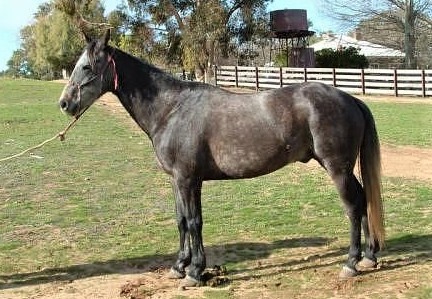
The Heihe horse originates from the Heilongjiang River basin, along the border of Russia. They are a tough breed, able to withstand frigid winters, hot summers and rough terrain.
The Heihe breed came to be from a mix of Mongolian and local Soulun stock. Officially recognized as a breed in 1963, they are one of the newer Chinese horse breeds. These hardy horses stand between 14.2 -15.2 hands tall and have medium heads and necks, strong legs, high withers and muscular bodies. They are most commonly bay, chestnut, black or gray in color.
There are two types of Heihe horses, the lighter riding-draft type and the heavier draft-riding type. They have excellent endurance and are willing in nature. These hardy horses make reliable choices for farm work, riding, driving and pack work.
2. Guoxia
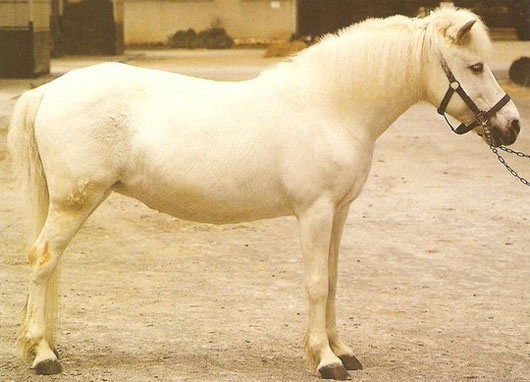
Originally from the Debao, Jingxi and Tianyan counties of southwest China, the Guoxia horse is an ancient breed, likely a descendant of Mongolian horses. Its name translates to “under fruit tree horse” as the breed was used for carrying fruit baskets in orchids.
Included in our list of the smallest horse breeds, a Guoxia stands at around 11 hands tall. This adorable breed has a small head, thick neck, strong legs and hardy feet. They are often gray, roan or bay in color.
The breed was thought to be extinct until a herd was discovered in 1981 in a remote area of Southern China. Due to this, they are not recognized as an official breed, though people are working to preserve these special horses. The breed’s uses include riding and driving and they are particularly popular for children due to their calm dispositions.
3. Guizhou
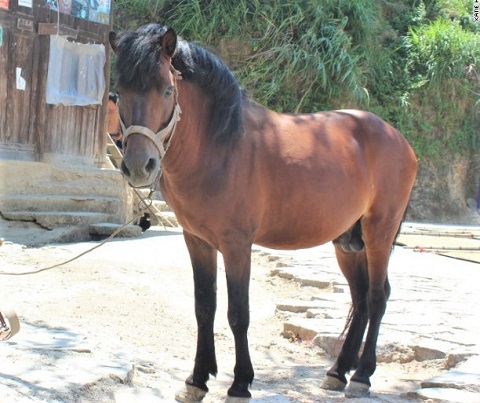
Developed as a working breed, the Guizhou pony originates from the mountainous province of Guizhou. Due to their geographic isolation, this ancient breed is also one of the purest.
The breed was first developed by farmers in 770 BC. They were first bred for trade and cultivation purposes, as trade for horses and salt in the region was of huge importance. They have a well-muscled small build and are commonly brown, black, bay, chestnut, dun and gray.
There are two types of Guizhou horses, the lighter riding type and the stronger pack type. They remain a popular breed across China as people use them for riding, driving, agriculture and pack work. These mighty ponies are active and willing to please, making them popular workhorses.
4. Datong
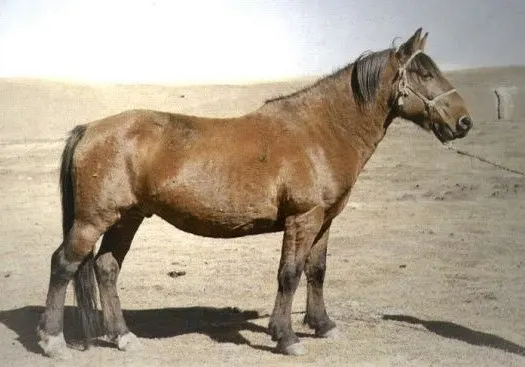
The Datong breed dates back nearly 4,000 years ago to the Datong River basin of the northern Qinghai Province. They are said to be relatives of the fabled Dragon horse which in artwork is portrayed to have two horns and exceptional endurance.
The Datong horse can also be born with two bony projections like the Dragon horse. The bony projections are small calcium-like deposits that grow near or behind the ears. This unusual trait is not desirable today and horses with it are not used for breeding.
Datong horses have compact, sturdy builds and can be bay, black, chestnut or gray. They generally stand between 12.2-13.3 hands tall. Thanks to their gentle temperaments and excellent endurance, they make for reliable companions in riding, driving and agricultural work.
5. Lijiang

Lu Yang / Shutterstock.com
As a relatively new breed, the Lijiang horse is native to the Lijiang district of China, its namesake. The breed was developed after WWII, as the region was in need of a sturdy horse for transportation.
As the local economy was on the verge of collapsing, Arabian, Yili, Hequ, Kabarda and small-stature Ardennes were combined with local ponies. The cross-breeding led to the development of a horse well-suited to the region’s needs. The Lijiang is a powerful, sturdy breed, standing around 12 hands tall.
These robust ponies are often bay, chestnut or gray in color. Today, the ponies are used for agriculture, riding and also as pack horses.
6. Jielin
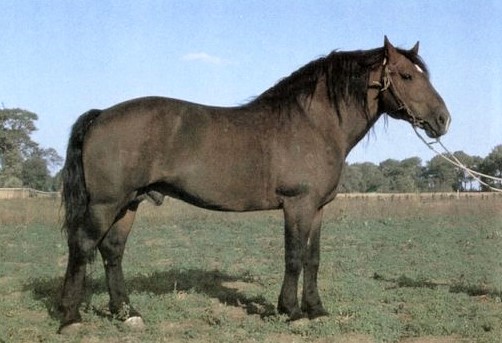
Native to the Baicheng, Changchun and Sipling Districts of China, the Jielin horses come from a long line of Mongolian horses. They are handsome, sturdy horses, larger than most Chinese breeds.
Originally, the Jeilin breed was considered too small to meet the agricultural requirements of the area. However, Ardennes and Don blood was later crossed in to create a larger, stronger horse. They now have large, heavily muscled bodies and powerful hindquarters, standing around 15 hands tall.
The breed was officially recognized in the 1970s. They are commonly used for agriculture work, riding, driving and transportation, thanks to their easy-going personalities and incredible strength. The breed is generally chestnut, bay or black.
7. Baise

The Baise horse is a primitive breed that originates from the Guangxi region of China. They often prefer to live in high altitudes and roam freely.
The Baise horse is a hardy and athletic breed. They stand at just 11.2-12 hands tall, making them one of the smallest horse breeds in China. With strong hooves and legs, they are able to strive in rough terrain.
The Baise is an ancient breed, tracing all the way back to 20 BC. Throughout their history, they have been used for meat, riding, working and driving. They are typically black, chestnut, gray and bay in color.
8. Balikun

Indigenous to the Xinjiang region of China, the Balikun is a light breed of horse. Believed to be descendants of Kazakh and Mongolian horses, the breed has been around for about 200 years.
Balikun horses are hardy, as they are able to adapt to harsh conditions, including frigid temperatures. They stand around 14 hands tall and have a heavy head, muscular body and strong legs. Most commonly they are bay or chestnut in color.
The Balikun has many uses including riding, driving, pack work and farm work. Their sure-footedness makes them reliable working horses.
9. Nangchen
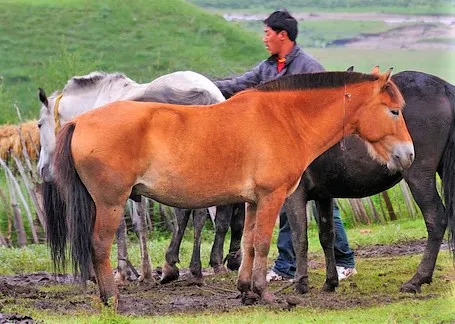
Photo by reurinkjan (Flickr)
Found in the Kham region of northeast Tibet, many believe the Nangchen horse has been purebred since the 9th century. These unique ponies became known to the western world by French anthropologist Michel Peissel in 1994.
Due to selective breeding in isolation, researchers believe these incredible horses do not contain Arabian, Turkish or Mongolian blood. As they have adapted to living at high altitudes, they display remarkable strength, resilience and speed. In fact, they have enlarged lungs and hearts that allow them to survive at such high elevations.
Though they are small, only around 12-14 hands tall, Nangchens have many characteristics of a modern racehorse. These high-spirited horses have a refined, muscular breed, making them popular among the locals for riding, herding and racing. They are often black, gray, brown, or chestnut.
10. Riwoche

With a striking resemblance to Przewalski’s horses, the Riwoche plays an important role in the lives of the local people, the Bon-po. In fact, these primitive horses may represent an evolutionary link between Przewalski’s and today’s modern domestic horse.
The Riwoche horse first gained international attention in 1995. A team of five explorers led by French anthropologist Michel Peisse stumbled upon the horses in a high mountain pass in northeastern Tibet. With a small, compact body, upright mane, and primitive markings, they are almost identical in appearance to the horses in cave paintings.
The Bon-po people use Riwoche horses for riding and as pack horses. When not using the horses, the Bon-po allow them to roam freely.
11. Tibetan

TonyV3112 / SHutterstock.com
For 4,000 years, the Tibetan pony has called the eastern part of the Tibet Autonomous Region home. Researchers believe that they are descendants of the Mongolian Pony and various Chinese breeds.
The local people hold the Tibetan pony in high esteem. Locals once traded these beloved ponies in exchange for tea and even presented them as gifts to emperors. Standing at around 12 hands tall, they have a defined head, powerful hindquarters and powerful bodies. They come in many colors including gray, bay, brown, chestnut and black.
The Tibetan pony is culturally important to the local people as well as famous spiritual and religious figures including the Dalai Lama. They are used for riding, pack work and farm work.
12. Xilingol
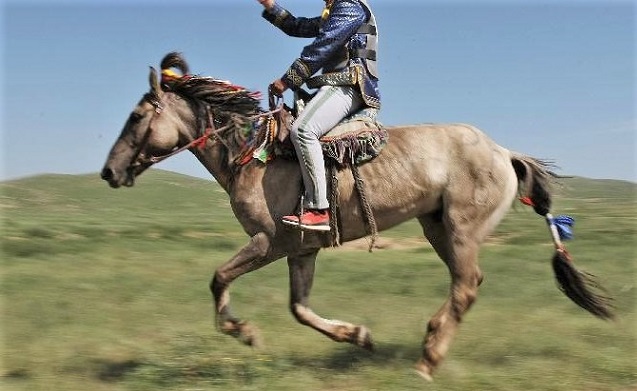
Native to the Autonomous Region of Inner Mongolia, the Xilingol horse is taller than most other Chinese breeds. They are a relatively new breed, developed in the 1960s.
The Xilingol breed came to be by breeding Russian Thoroughbred, Akhal-Teke, Sanhe and Chinese Mongolian horses. They stand around 15 hands tall and have a light, athletic build. They come in all solid colors.
The Xilingol is used for both riding and draft purposes. This unique breed is fast and agile.
13. Yili
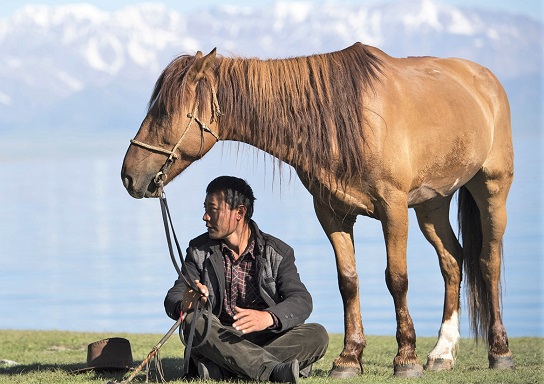
The Yili horse is a relatively new breed native to the Northwestern Xinjiang region of China. The breed first came into development in the 1900s with the goal of improving local stock.
The Yili originates from Mongolian horses crossed with Russian breeds such as the Don, Don-Thoroughbred crosses and Orlov Trotters. In 1963, breeders finally developed a draft-riding type was that met the goal of the breed. Today, the Yili stands around 14 hands tall and has a compact build, slightly arched neck and a short, strong back.
Yili horses are normally chestnut, brown or black in color. Today, the Kazakh people use the breed for ceremonies, herding, riding, farm work, meat and milk.
14. Yunnan
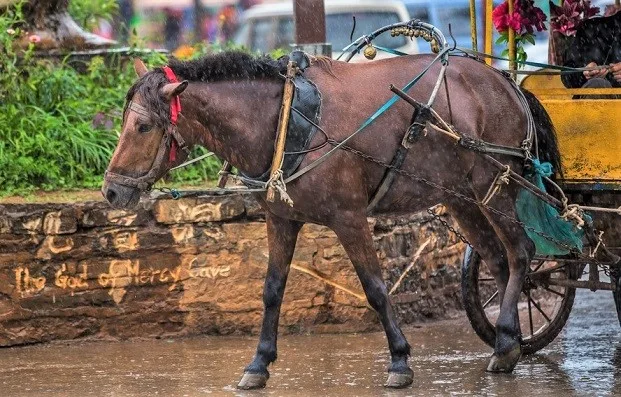
zijin / Shutterstock.com
The Yunnan is an ancient breed that traces back to 285 BC. They are native to the Yunnan region of China.
Breeding of the Yunnan horse is strictly local without having any influence from outside blood. These small horses were once used to pull carts and chariots. The Yunnan stands around 11 hands tall with a short neck, heavy head and small frame.
Traditionally, Yunnan horses are bay, black and chestnut. They have kind, willing temperaments.
15. Hequ

Photo by gill_penney (Flickr)
The Hequ horse comes from the Qinghai, Sichuan and Gansu provinces of China where the Yellow River creates a large “zig.” The name Hequ means “river zig.”
The Hequ breed traces back to the 7th century, though the name is Hequ only came to be in the 1950s. Other names for the breed include “Tangke”, “Qiaoke” and “Nanfan.” The breed stands around 12-14 hands tall and has three distinctive types, Jiaoke, Suoke and Kesheng.
The Jiaoke type is mainly in the southern parts of Gansu province and is the heaviest variety. The Suoke type is mainly in the western Sichuan province and has a broad head, short coupling and high tail carriage. The Kesheng is in the Kesheng Mongolian Autonomous Region in the province of Qinghai and has influence from Mongolian horses.
Hequ horses have a solid but coarse build, coming in colors such as black, brown and gray. These hardy horses are popular across China for riding, driving, pack work and racing.
Also, read about the Ferghana horse, an extinct Chinese horse breed in our extinct horse breeds article.
Source: horseyhooves.com








